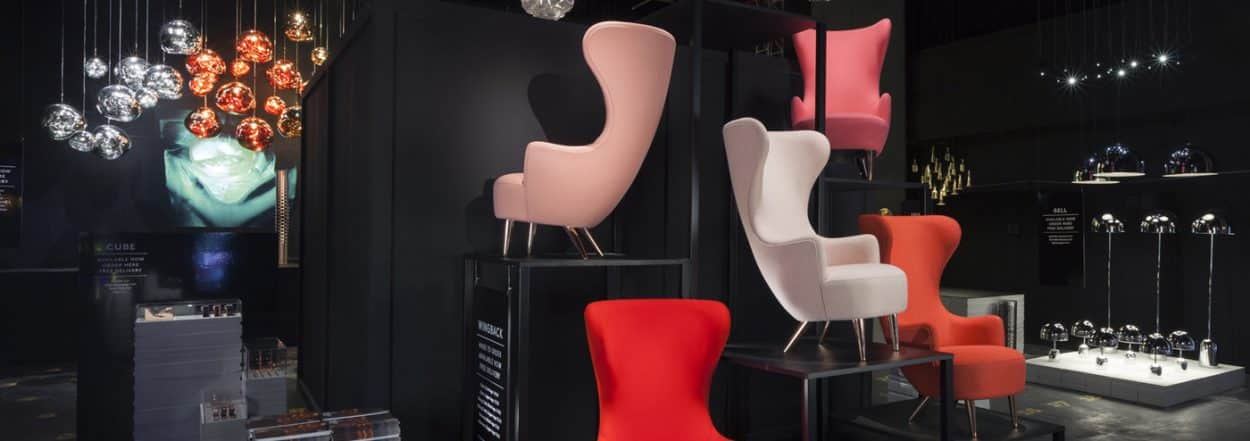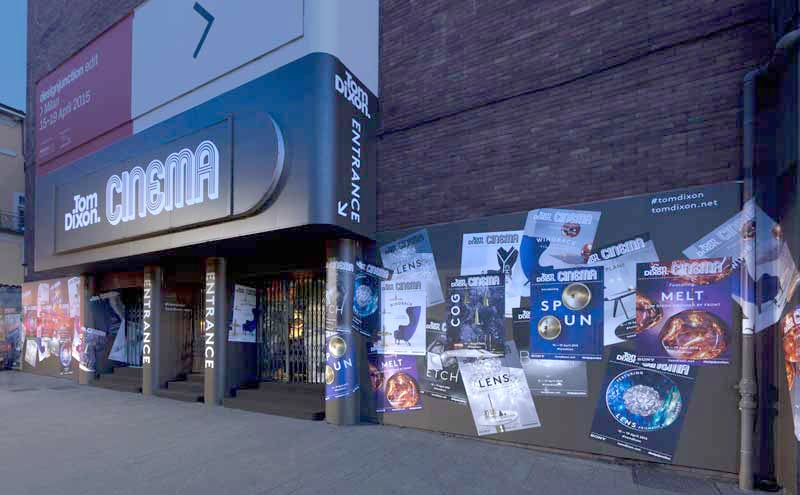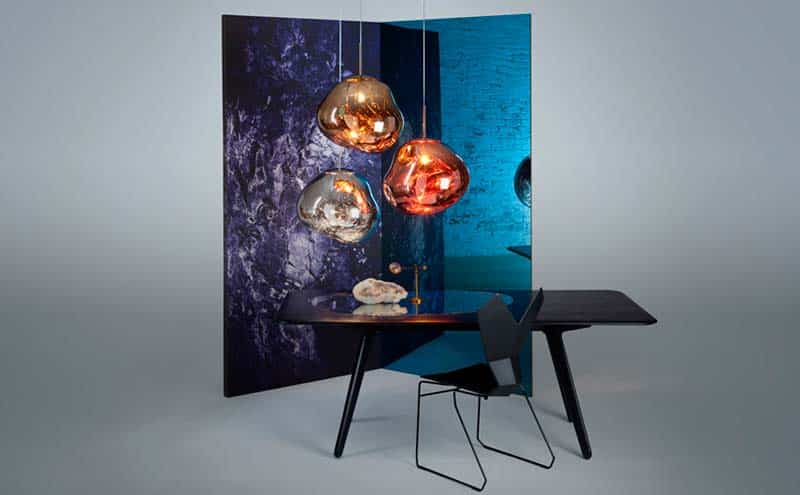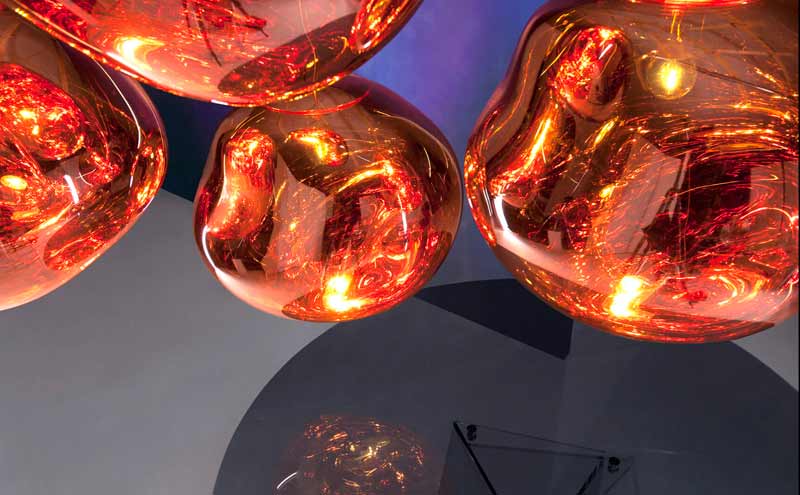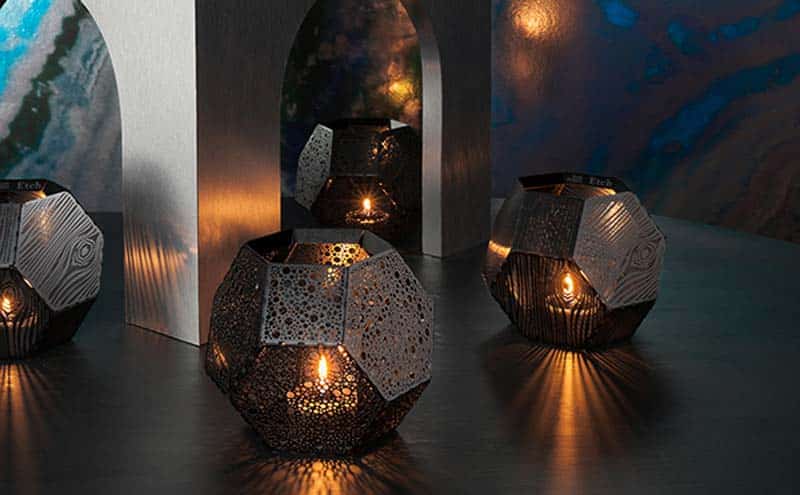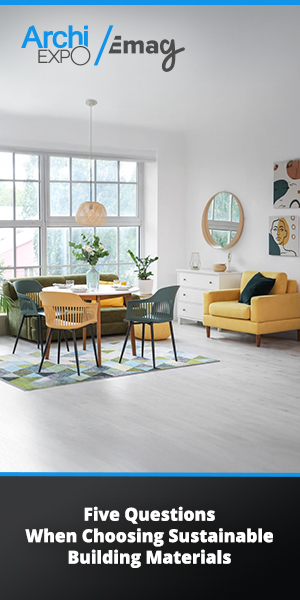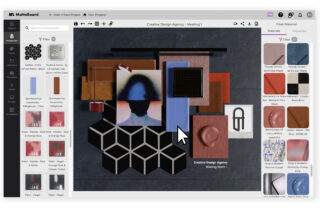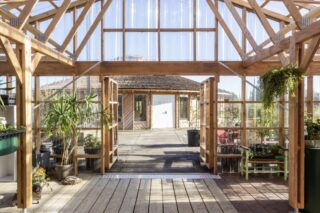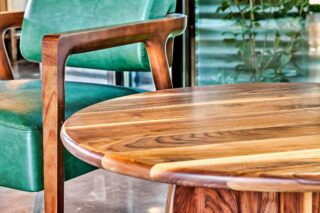April 2015, it was a rather disappointing year for designjunction and Salone del Mobile. Designer Tom Dixon handed over the key to successfully attracting the viewer’s attention. High-end designer products were seen at the designjunction exhibition in the former school section of Casa dell’Opera Balilla, but the presentation left visitors looking for more. Tom Dixon transformed the theater side into his personal exhibition, The Cinema, part of designjunction as mentioned in our preview of the event.
The space displayed his light products around the room and several were dangling from the high ceiling. Accessories and other products were also placed throughout, and a cashier in the entrance area offered visitors the possibility of purchasing products on the spot. Dixon climbed onto the stage, where he gave his speech at The Cinema. His talk focused on current problems iSaloni is facing today, or the evolution of the Milan furniture fair, as he explained, and he offered insight to designjunction’s disappointing performance.
The fair started in the 1950’s as a professional B2B melting pot, putting forward Italian brands in the market. According to Dixon, it has turned into a massive global marketing fest.
“Last year we did a little experiment and we went into the Salone,” he began. “It was very good for business, very efficient. But it made me feel a bit like a hamster on a wheel —so I was caged in, I was imprisoned. It’s time to break away, and that’s why we broke away to The Cinema.”
How to Make People Look at Your Products at iSaloni
He goes into talking about the history of the theater, a fascist youth cinema in the 1930s since the school was a fascist youth school. After the war, it was a Disney cinema with a primary school next door and its last inspiration was a pornographic cinema.
“It’s obviously the perfect place for us to be in Milano,” said Dixon. “The Cinema is a great place for us to have our own personality and get people to slow down a bit in order to have a look at the objects in a more civilized way.”
In a few minutes, he described his latest collection, including Lense, Cog, Etch and Melt. Each product came with a catchy blurb. The Lens was based on lighthouse technology. “We made an illuminous product for once in our lives,” said Dixon when describing Lens, a transformation from his previous more mood lighting products. Jumping to Melt, the main highlight, Dixon compared this product to a “crushed copper ball” made from a single mold with luminosity inside.
- The Cinema. Courtesy of Tom Dixon.
- Melt. Courtesy of Tom Dixon.
- Etch. Courtesy of Tom Dixon.
He paused, took a drink of water, looked around his creation and asked the crowd, “So, do you like it?” A flow of chuckles accompanied by clapping answered his question well enough.
The Audience as Design Tourists
Back to the Salone issue, he said “the design business should become more interesting to a broader selection of people. It puts designers into this odd situation of being almost like carnival performers, and it puts [the audience] in this position of being like design tourists. I know you’re all here for professional reasons, but you can’t deny that you’re here for design tourism as well.”
Although some complain about this new evolution in the design business as an entertainment business, Dixon remains optimistic. “For the designers themselves, this can only represent a really great opportunity.”
The fair strengthens brand marketing and prototype presentations, according to Dixon. Notwithstanding, he believes that now, more than ever, is the time to only show products that are available for purchase.
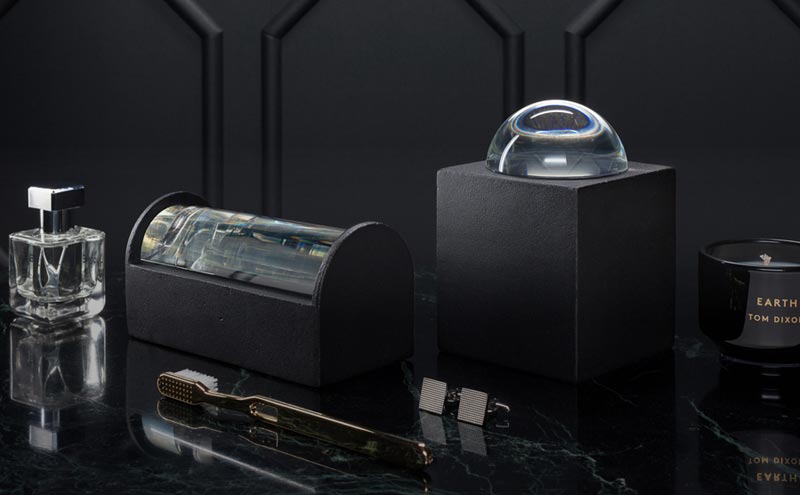
Trove. Courtesy of Tom Dixon.
“It’s peculiar in this fair that most things you see here are not actually for sale. I’ve never really divided out the commerce and design in a way that a lot of other designers do. I think it’s important for us to talk about not just how we created things but also how we sell them as well. All too often, these things that you see in Milan are not available in the market for three, four or six months after they’re shown.” The quick copy-paste production of design in places like China makes it even more important for designers to show what is available at the very moment viewers see the product.
